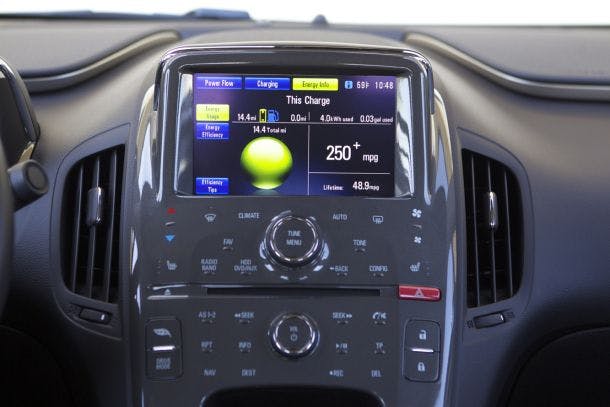The Convergence of UX & Storytelling

By Adam Kleinberg
Today, as user experience designers, now need to consider the story that lives within our pages, not just the user flows that connect them together.
We need to become storytellers.
Once upon a time...
Several things have happened over the past few years leading to this convergence.
- First, there are apps. The app economy has changed the expectations consumers have from a digital experience. Over 60% of Americans now have a smartphone. That's means significantly more than half our users are tapping and swiping and zooming all day long. They are having amazing digital experiences and this has changed their expectations from a digital experience. That means we, as user experience designers, need to design delight into the experiences we create.
- Brands are coming to terms with the fact that we can't just shove coupons and big red buttons at people and expect them to click like gerbils in some cheese maze. 8% of the web audience accounts for 85% of clicks on banner ads. What does this mean to you? It means only a small number of people are conveniently ready to take the actions you want them to take. The rest need to be persuaded. Stories can do that.
- Engagement has become a top marketing objective in organizations—meaning being intuitive isn't enough from UX. Brands used to plan their advertising around "the funnel." They'd spend a pile of money on building awareness. Another pile on driving consideration, intent and finally purchase. Now things are streamlined. Brands have two goals: engagement and conversion. Conversion is a science. Engagement is an art.
- We're realizing that design without content is like building a house when you don't know how many people will need to live in it. How many of you have designed a site that looks like this: a nav containing "products/services/about us/contact us," a big marketing feature box and 3 smaller promo boxes underneath?
- My wife is not an idiot. My mom is not an idiot either. Not even my seven-year old son is an idiot. They are your users. We've finally come to terms with the fact that users are, in fact, not too stupid to use a scroll bar. But for years, I heard how important content couldn't live below the fold. Why? Because people are too stupid to use a scroll bar or because we have been too stupid to draw them into a story that would make them want to?
- The convergence of storytelling and UX
Right now, there is a shift going on in how we are approaching user experience. It's a more holistic view. We need to think about the entire experience of the user.
When I learned to be a designer, it was about information architecture and interaction design. Our deliverables were personas which lead to user flows which lead to site maps which lead to wireframes. Frames. We were ultimately tasked with designing frameworks. The content that lived inside those frameworks was the job of a different department, downstream.
Great UX was about anticipating the behavior of a customer. It still is, but now, we're starting to realize that we can do more than anticipate through user experience. It has essentially been a right-brained process. Linear. Analytical. We created seamless funnels that ended in calls-to-action.
Great advertising, on the other hand used to be about perception, persuasion, motivation, desire. It tapped into the left side of the brain—the one driven by emotion. Emotion is what impacts behavior.
How many UX designers have stated that "great UX is invisible?" Today, that idea is flawed. UX can do more than anticipate behavior. It can shape it. In short, user experience designers now need to consider the story that lives within our pages, not just the user flows that connect them together. We need to become storytellers.
"Wait. That's content," you say.
Sure it is. But the line between content and the frames it lives in have blurred. It's all part of what a user experiences.
Ad agencies actually figured this out a long time ago. For forty years, the construct of the art director/copywriter team has been ubiquitous in virtually every advertising agency in the world. Why? Because it works. Having a designer's perspective and a writer's perspective allowed us to create ads that were effective when our users experienced them. We need to learn from that.
Many UX purists convey a sense of disdain for advertising people . I have great respect for the discipline of UX design, but what many fail to recognize is that great advertising and UX both are derived from a common principal—empathy.
What differs is what they use that foundation of empathy to create. UX designers have traditionally created intuitive digital experiences. Advertising people have created stories designed to change behavior. Both have been powerful tools in their own right. Imagine their power when those two outcomes converge?
Feature vomit is not the answer.
Many brands think the answer is what I call "feature vomit." One example is the monstrosity of a website from Sears called ShopYourWay . It's a Pinterest copycat. It's got apps I can add to my shopping experience. It's got a social network. It's got Kim Kardashian. It's got message boards with random questions and answers. What it lacks? A unified purpose. A story.
Chevy Volt is another example of feature vomit. I got a free Volt for the weekend because of my Klout score last year. The dashboard interface was so confusing with a zillion buttons and a touch-screen interface I ran a red light trying to figure out the air conditioner. Chevy isn't struggling to sell Volts because people don't want electric cars. They're struggling because those who do buy them are not raving about how much they love the experience of driving one.

Take a moment and look at examples from Apple, Jawbone and Yahoo!:
Apple tells you a story and encourages you play with product shots of the Mac Pro and the iPhone to provoke emotion and desire.
Jawbone has navigation that does nothing but change the background video texture. Choose your own adventure. has navigation that does nothing but change the background video texture. Choose your own adventure.
Yahoo!'s Flickr uses and interactive slider widget simply to drive home a point the point that they offer a huge amount of storage.
Their award-winning Yahoo! Weather mobile app uses curated Flickr photos as background images every time you check the weather. It is essentially a platform for storytelling.

These are just a couple of examples of how brands are bringing together the art and science of storytelling and UX. They all use this notion of "storytelling" in one shape or another to provide more than just a frame. They connect with human beings on an emotional level. The entire experience of the user has been designed — the interface, the content, the interaction model.
Why does this matter? Because "users" may not be ready to step into your funnel. Being intuitive only gets you so far. Remember, it's emotion that shapes behavior. Your customers expectations from a digital experience are different today. Dare to delight them at your own peril.
UX and Storytelling have converged. I truly believe they will live happily ever after.

In a few weeks, I'll be moderating a panel at ad:tech NYC featuring senior marketing and design leaders from Yahoo!, Bank of America, MasterCard and GE on the topic of Why User Experience is the New Black.

Traction CEO Adam Kleinberg recently gave his thoughts on measuring content marketing ROI to Giselle Abramovich of CMO.com.

Traction made the San Francisco Business Times list of the Fastest Growing Companies in the Bay Area... by the skin of our teeth.
